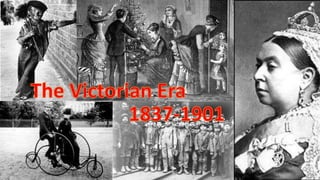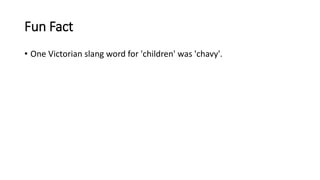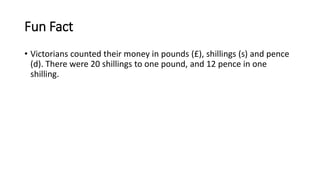Victoria became Queen of England in 1837 at age 18. She had nine children and reigned during a time of vast expansion of the British Empire and rapid industrialization. Many children worked in dangerous conditions in factories and coal mines during this period due to lack of protections. Schools taught basic academics but content differed by gender, preparing girls for domestic roles and boys for factory or military work. Living standards varied greatly between the rich and poor.



















